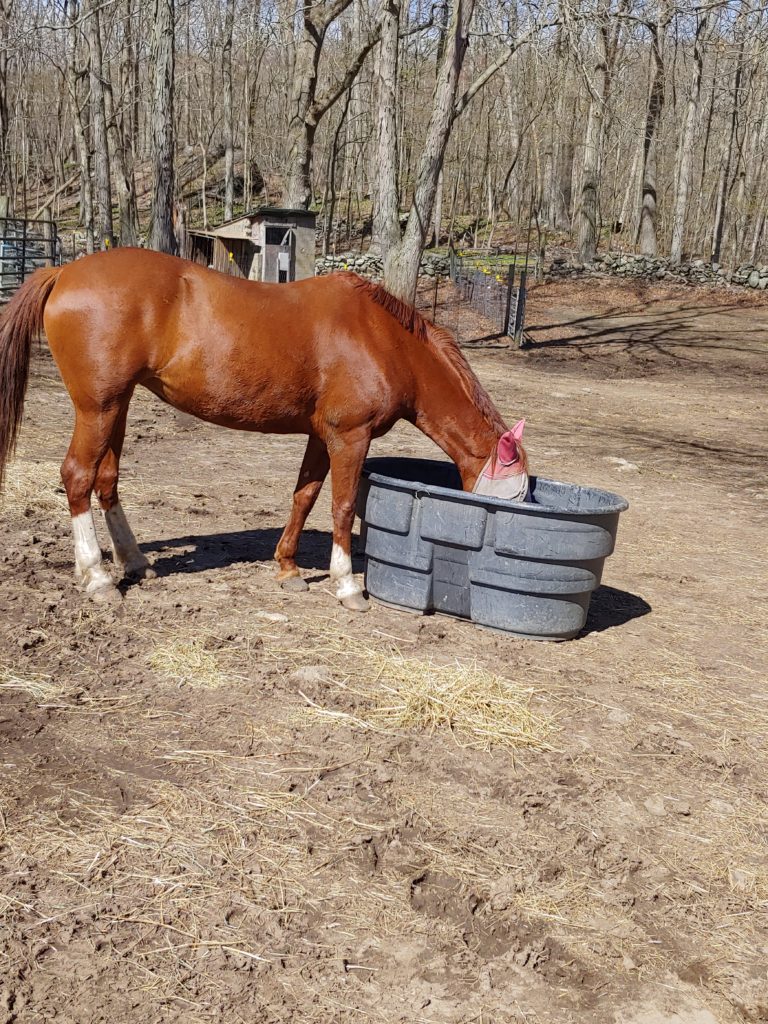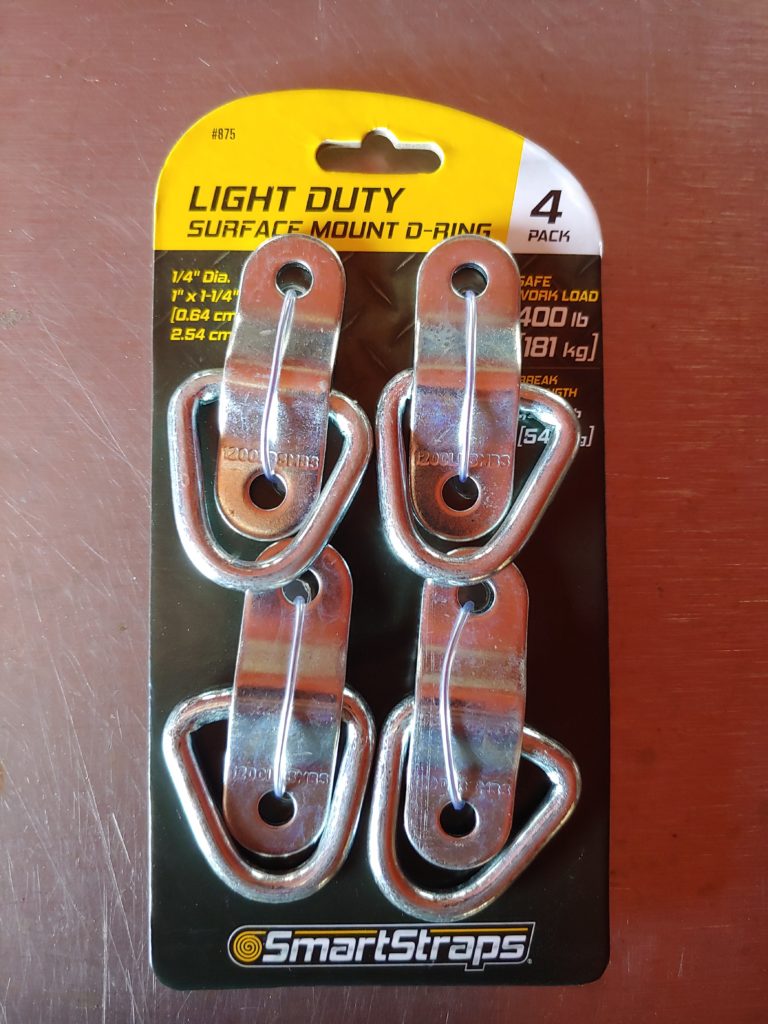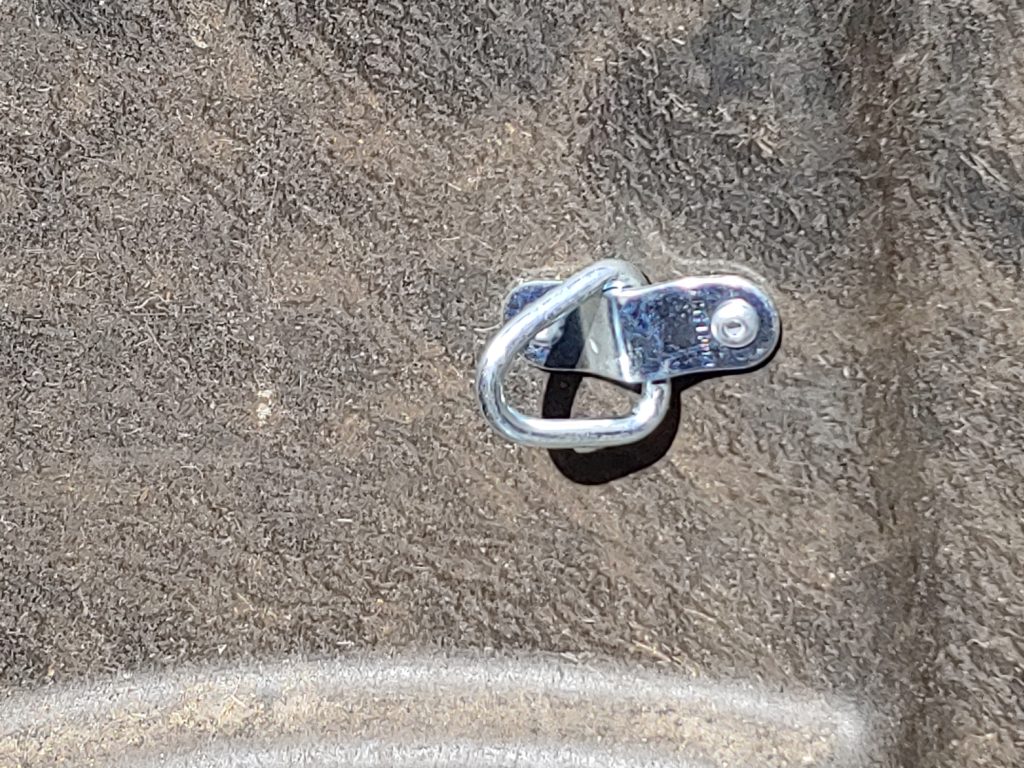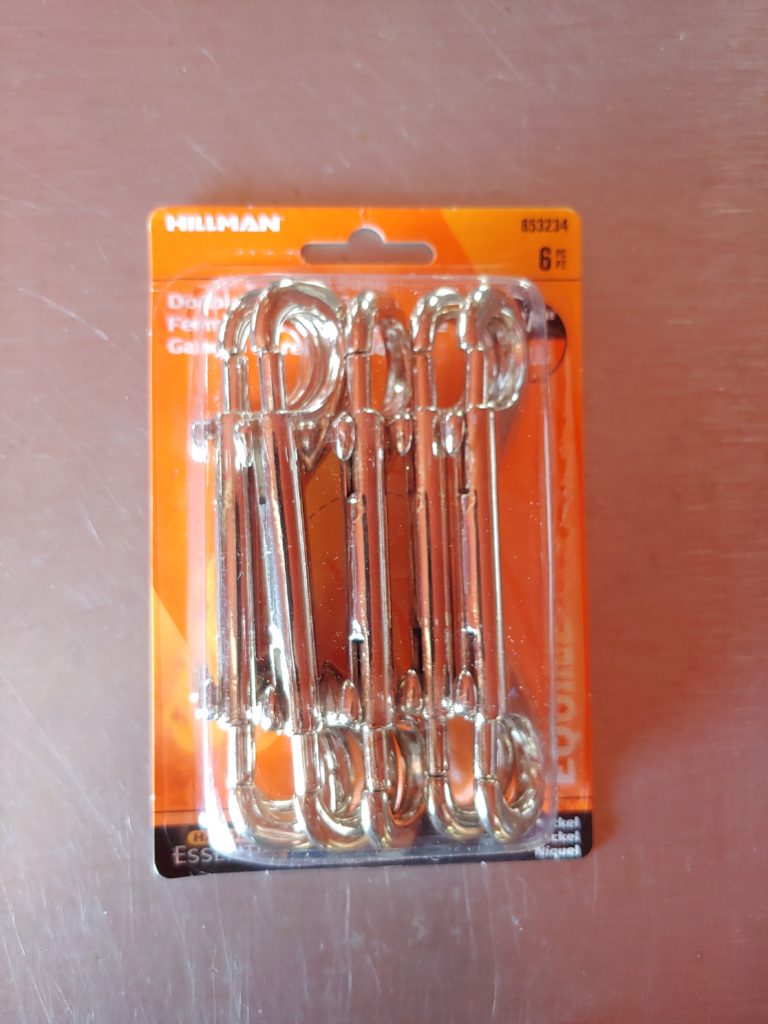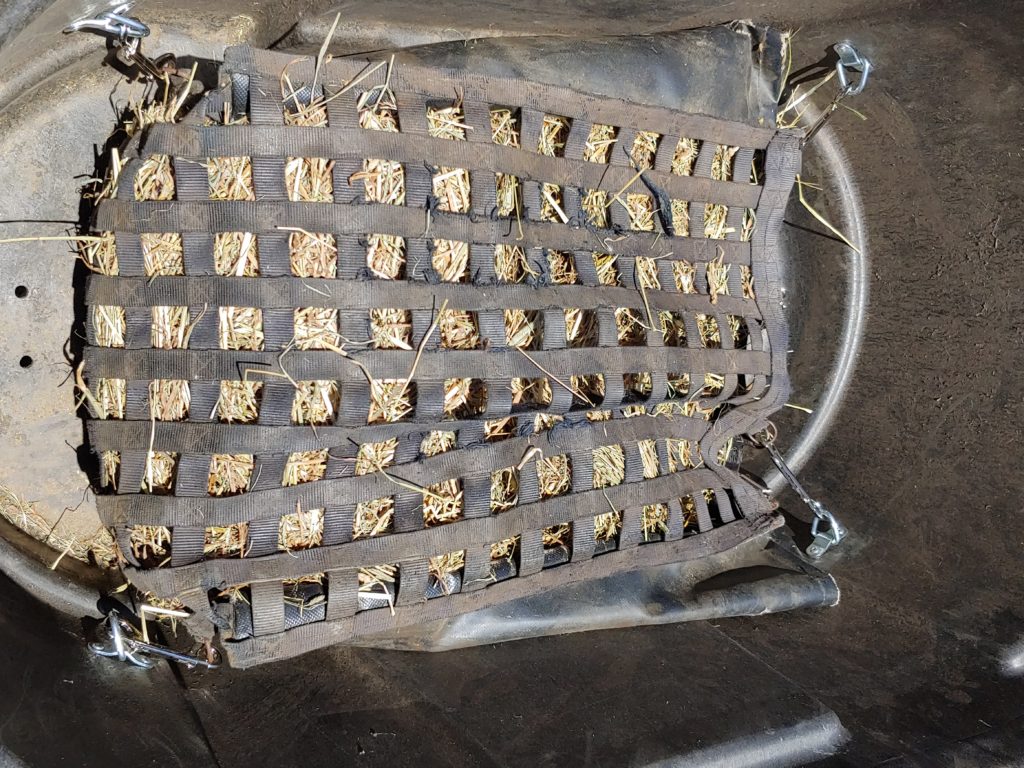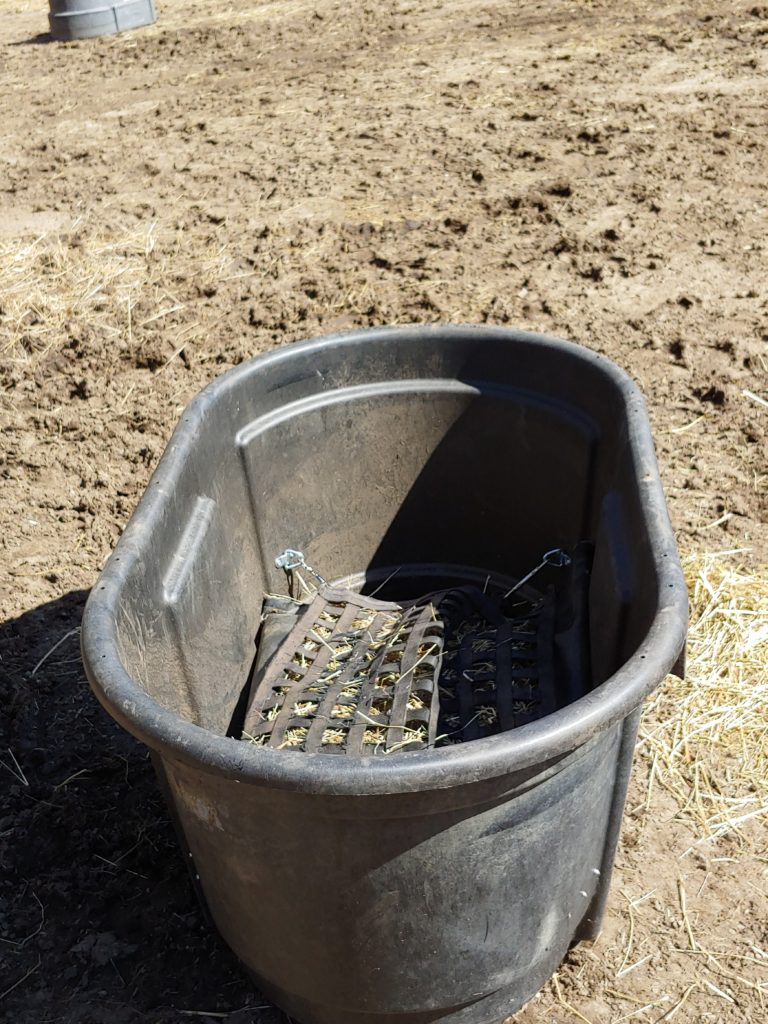We have used NibbleNet brand hay feeders since the Fall of 2012. Over the years, we have hung them in stalls, hung them on trees, and used them on the ground. When the horses were barefoot, it was fine to fill a NibbleNet and put it on the ground for the horses to eat out of, however, if your horse is shod, it’s a really bad idea; the shoes can get the webbing under the heel and cause an injury or at least a pulled shoe. I want to emphasize that I think NibbleNets are the best slow-feed hay net out there. We have nets that have been in continuous, use for 7.5 years and are not worn out. Our favorite is the Double Nibble 12″ with 1.5″ openings on both sides, as it holds a lot of hay and is versatile in usage options. There are other options available that hold even more hay.
Why do we like the slow feeders? First, they actually make the horses take longer to eat the hay. Second, (and more importantly) the horses waste MUCH less hay when eating out of the slow feeders. The one problem we have had with feeding from the NibbleNets is topline. The topline on the horses has been deteriorating and I am convinced it has a lot to do with the horses eating hay from a mid-height hanging position. There is a chance it is also related to the fact that I don’t like to do dressage work in the arena. If you watch a horse standing in the pasture eating grass, you will clearly see the back muscles (i.e. topline) raise up and level out as the horse lowers his head to eat. When the horse eats from a mid-height, such as in a hanging hay bag, the back doesn’t stretch in the same manner. Over time, this results in a hollow back and less topline muscling. Additionally, the motion of a horse pulling hay out of a slow feeding net is generally a sideways motion that results in building up the underside of the neck muscles, which further contributes to the hollow back.
If you look at this picture of Mojo’s back, you can see the muscles in his back are slightly atrophied inside the yellow outline.
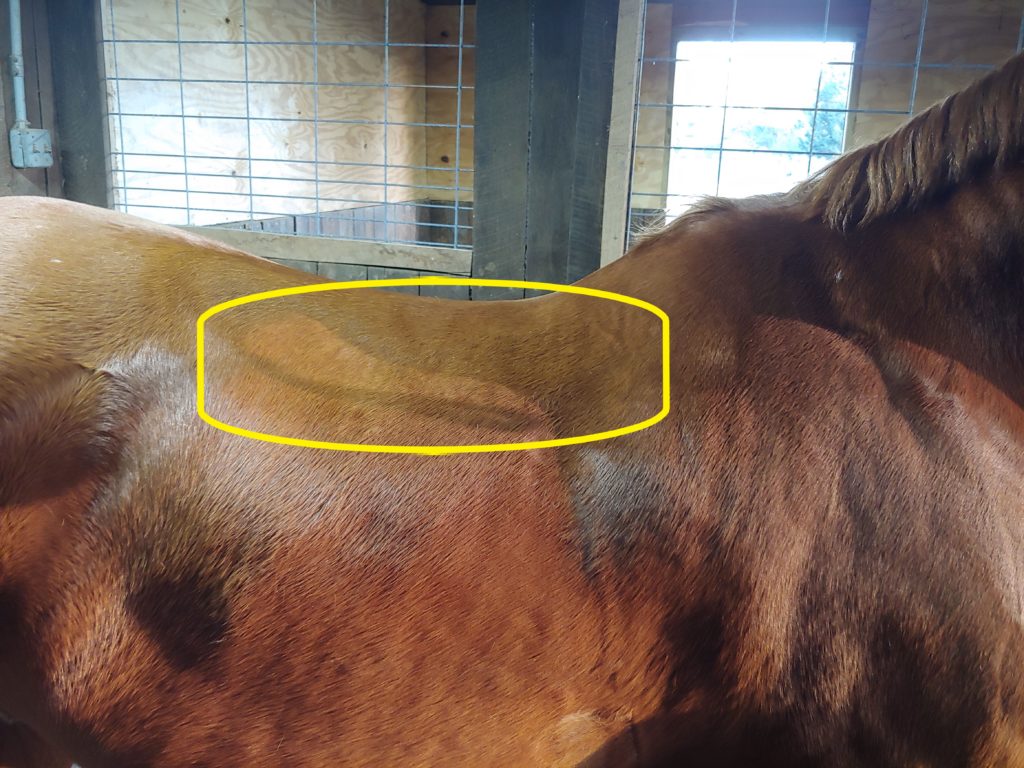
So, to combat the deteriorating topline, we decided to take all the hay nets out of the stalls and off the trees. The horses went back to eating all hay off the ground. It didn’t take very long of raking up wasted hay to realize we wanted to find a new solution. So, after a little consideration, Anna decided we would make hay feeders that used the NibbleNets at ground level. We posted on Facebook looking for damaged water troughs, as they would be the base for the hay feeder. We already had 1 damaged 100 gallon Rubbermaid trough and in very short order, we had 4 more to add to the collection and it was time to build the feeders.
Step 1: drainage holes. Drill a lot of 1/2″ drain holes in the bottom of the trough to prevent rain water from collecting in the trough.
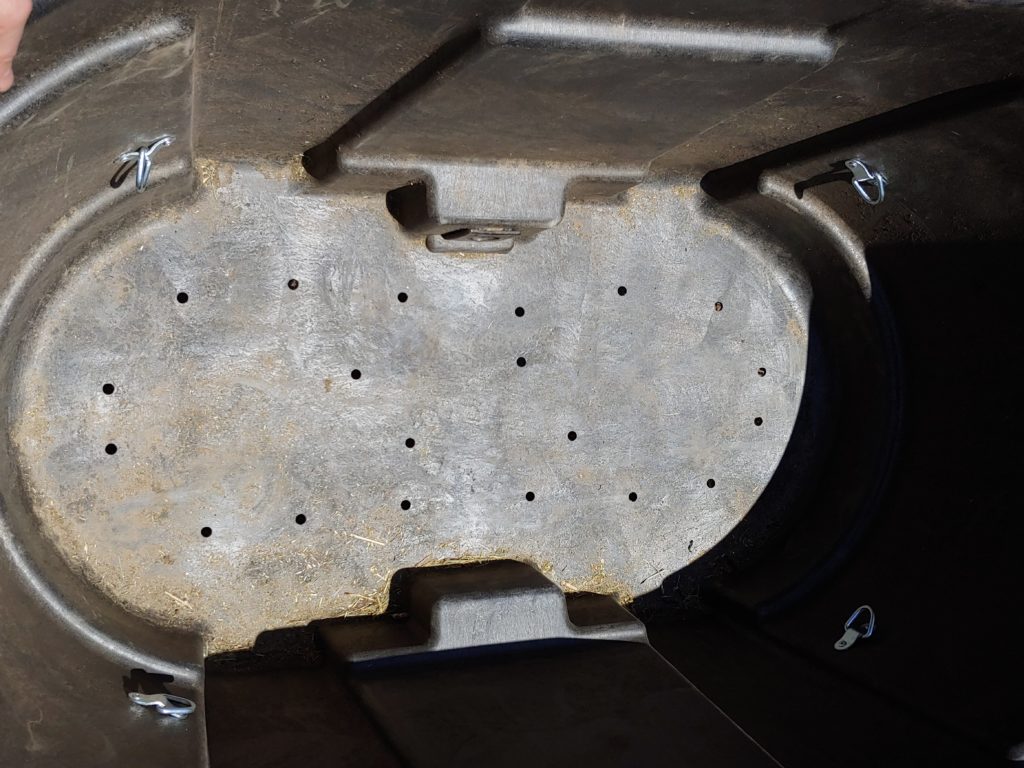
Step 2: install D-rings. These surface mount d-rings are available as a 4 pack from Lowe’s for about $6. We have installed these d-rings in the tack room of the horse trailer to add ratchet and tie down points for holding bins in place. In this case, 1 package per hay feeder was just right. I elected to install them with 3/16″, 1/2″ long rivets. 1 d-ring was put in each of the “corners” of the trough, about 8″ off the bottom (you can see all 4 installed in the previous picture).
It’s important if you use rivets to attach the D-rings that you make sure the rivet shafts are snapping off clean and smooth. Part way through the assembly, I opened a new package of rivets (from a different manufacturer) and the rivets started leaving a pointy “thorn” sticking out. That’s a recipe for a cut horse nose and a vet bill, so I used a file to smooth down all the rivets that didn’t break off smooth.
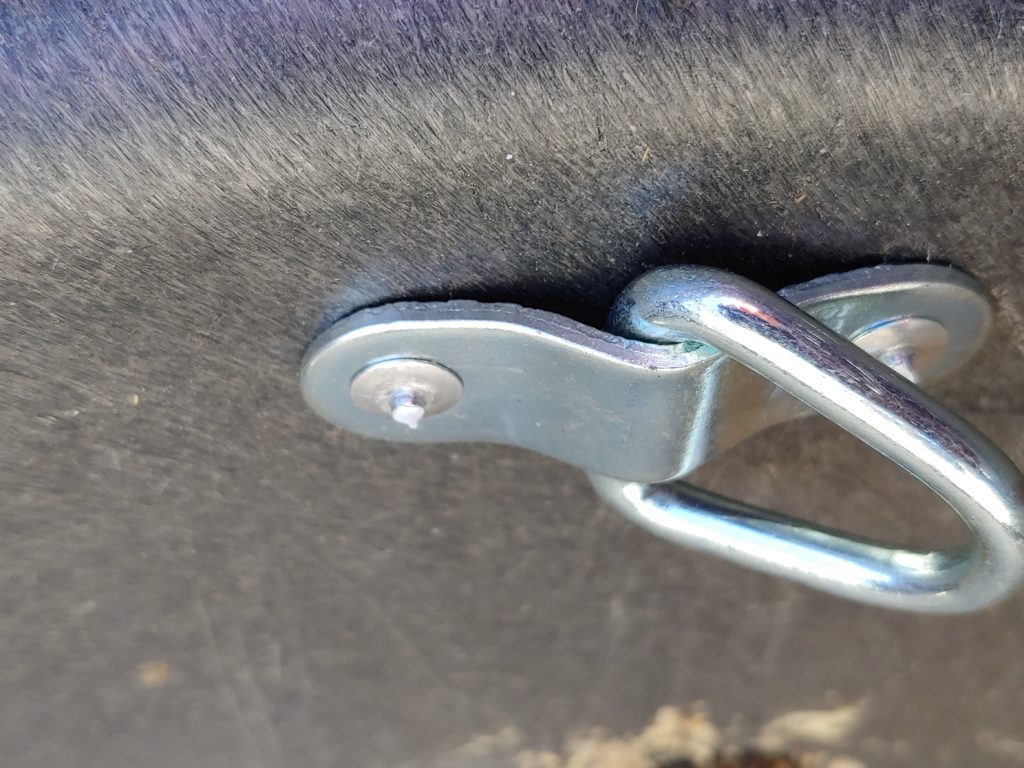
Step 3: add NibbleNet. When you purchase a NibbleNet, you have the option of buying it with straps or with double snaps. I always buy them with straps because you can buy a 6-pack of double snaps at Tractor Supply for $13. Simply use the double snaps to close the hay feeder and attack all 4 corners of the bag to the 4 d-rings.
Within minutes of finishing the project, Amira was completely comfortable with the new arrangement. There is almost no wasted hay and the horses are eating in a more natural position with their heads down low.
